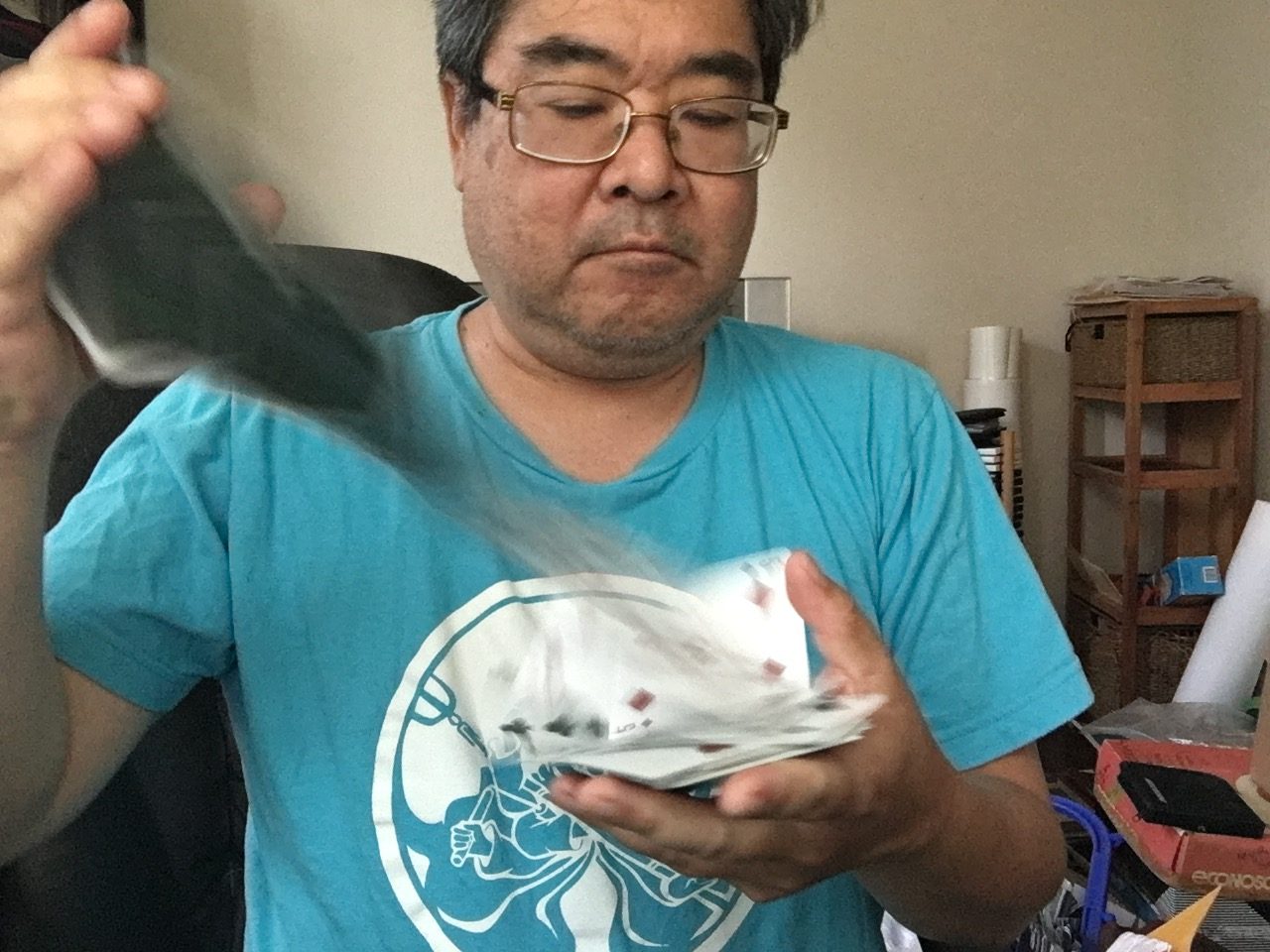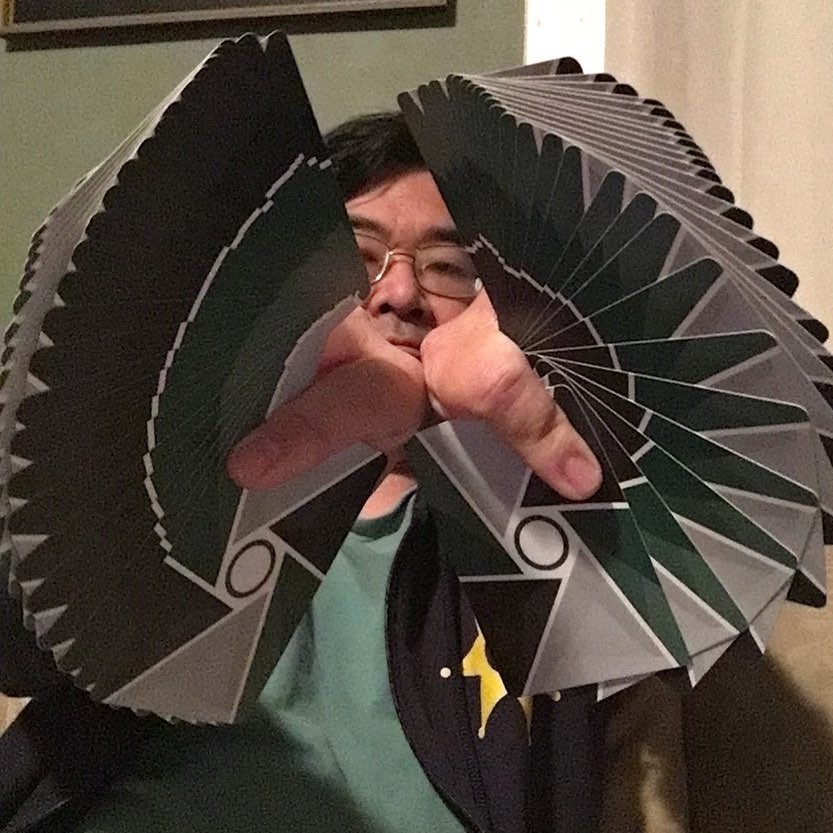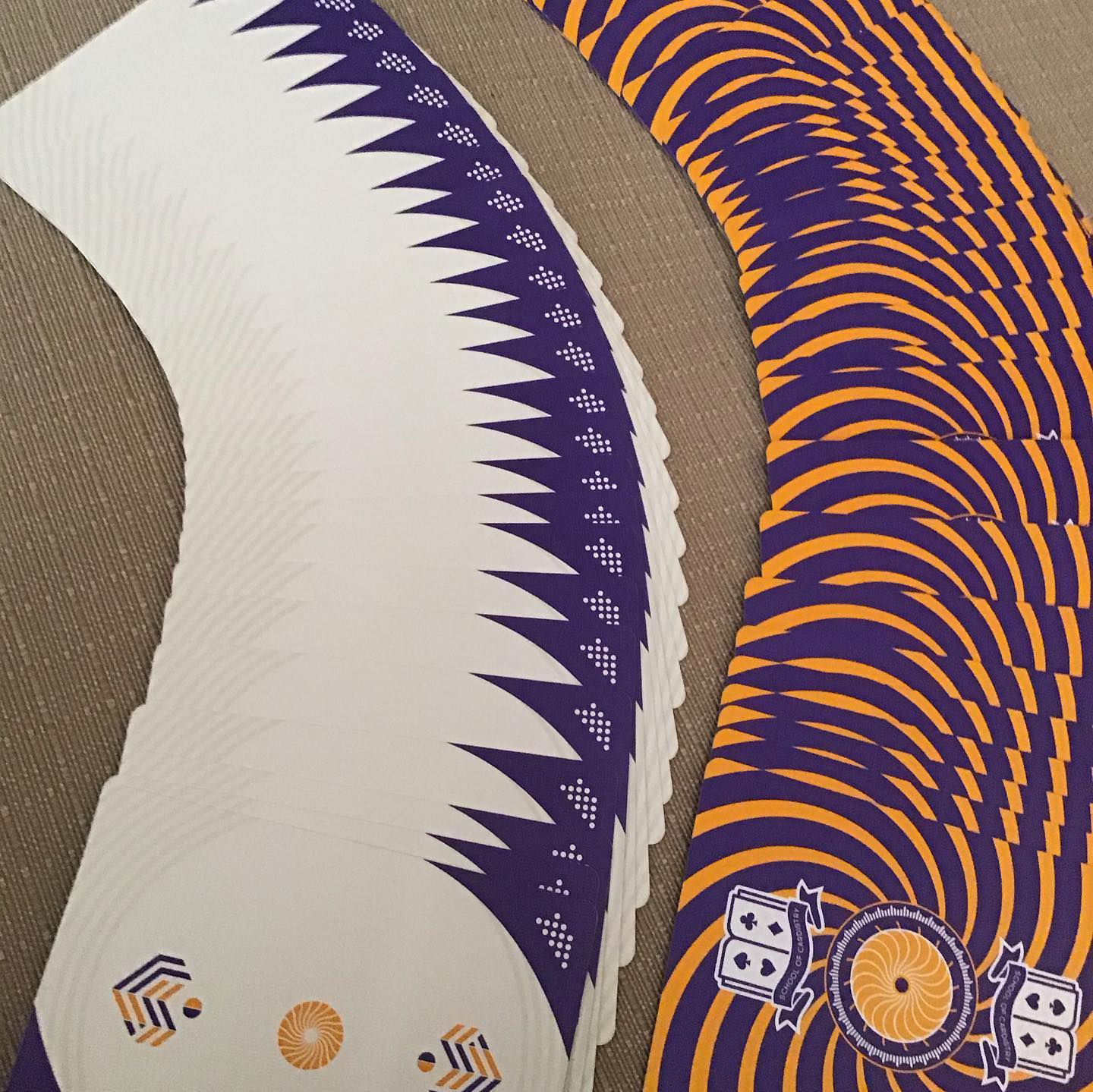“Cardistry” (Card/Artistry) is the form of card manipulation that has split from the magic community over about the last decade to become its own art form. Much like juggling as a performance art split from magic centuries ago, cardistry has now separated from magic far enough to be recognized as its own discipline. Unlike juggling, at least so far, cardistry is still holding on to some magic traditions in regards to acknowledging provenance. The parallels with juggling continue to grow, though the trajectory of cardistry being closer to juggling or magic has not yet been determined.
Nearly every card magician has thrown in a simple flourish, usually a one-handed cut of the cards, or perhaps a fan of the cards in a stage routine. The expansion of these almost “throwaway” moves to the central focus of a routine is arguably the first delineation of cardistry from card magic. While magic has a clear separation of “effect” (what the audience sees) and “method” (how a particular effect is accomplished), cardistry is very clearly more like juggling in regards to both effect and method being more open before the audience.
As its popularity grew in the early 2000’s, cardistry would break away from magic, and for some in the magic community, this was all for the better. Some magicians viewed “card flourishing” (cardistry had not yet become the general term of art) for its own sake to subtract from the emotional reaction magicians were trying to elicit from the audience. They would argue that such flourishing was not “magic,” but simply “juggling,” as illustrated by this thread in late 2001 on the Genii Forum: https://forums.geniimagazine.com/viewtopic.php?t=3614. Magician and magic scholar Jamy Ian Swiss would be even more clear, noting cardistry is viewed by many magicians as “essentially pornography; it serves no function except as eye candy. It’s juggling, and juggling and magic are two separate things.”
This separation was not always the case, as “juggling” was in fact an early, catch-all term for “entertaining.” “Jugglers’ ‘ performed skillful throwing and catching; but also included sleight of hand. As Thom Wall writes, “This early definition places importance on entertainment rather than skill….” Cardistry’s break is in that sense similar to the founding of the International Jugglers’ Association (IJA) in 1947 during a meeting of the International Brotherhood of Magicians (IBM). Eight jugglers felt a separate organization focusing on jugglers and juggling, separate from the IBM, would be beneficial, and the IJA was born. While no formal “cardistry only” organization has yet been founded, cardistry has proven popular enough to support “Cardistry Con,” an annual gathering for cardists. (Displayed on the walls of the 2015 Cardistry Con was the statement, “The first rule of Cardistry-Con is: you do not talk about magic.”)
Author performing the classic cardistry move, the “Werm” by Dan and Dave Buck: https://www.instagram.com/p/CRE-XUHHaSJ/?utm_source=ig_web_copy_link
The break of juggling and magic offers significant parallels, if not lessons, for cardistry’s evolution. While magic requires deception, juggling and cardistry do not. This offers both a strength and weakness in comparison with magic. On the one hand, the ability to share information openly makes it easier to spread skill and interest. On the other hand, if “anyone” can do it, it could lose its luster among a wider audience. While it’s relatively easy to learn to juggle three objects, doing so can be visually pleasing; more so than, arguably, learning how to do a Charlier cut. While highly skilled juggling or cardistry can be magical, the method is open (the juggler is throwing and catching; the cardist is moving packets of cards in a certain way). One could, theoretically, slow down a juggling or cardistry video and “figure it out.” (Performing it is a different story). This openness in method hasn’t just meant it’s easier to figure out a juggling move by watching it, it’s also meant that moves spread faster out into the world. This is much more true today than it was for juggling’s early years before the internet explosion.
Despite this ease of information spread, cardistry has, at least so far, remained true to a precept of magic: asking permission and giving provenance. Magicians ask permission from an inventor to perform/teach a move, and acknowledge that creator. As time has gone on, direct permission isn’t always asked for, though what still remains true is that moves are not taught (at least, not publicly on the internet) if there is a “for-pay” tutorial put out by the inventor, and nearly every video acknowledges the inventor of the move. As examples, see Grant Henry of Rise Magic as he introduces his troubleshooting videos for the riffle fan (Dimitri Arleri) and “phaced” (Tobias Levin).
And here, Ekaterina “Ekat” Dobrokhotova acknowledges Daren Yeow before her tutorial on his move, “mockingbird.”
I will note that Grant and Ekat do come to cardistry from magic, so keeping the traditions of permission and provenance is understandable, but it does seem that “pure” cardists have been maintaining this custom, even developing a database listing moves, linking videos, and acknowledging creators.
That’s the “good news.” The bad news is the reddit thread itself is 5 years old and has been archived. Time will tell if this is a sign of the decay of maintaining provenance.
A last indicator here for cardistry’s trajectory is the 2019 announcement from Dimitri Arleri and the Cardistry Touch crew developing notation to communicate cardistry moves, the latest version can be found here. Perhaps more accurately akin to dance notation, it is unlikely to be as elegant as siteswap notation for juggling, but its development is an exciting sign for potentially communicating moves to others without language.
Cardistry does have parallels with juggling with its more open spread of information and now the attempt to develop a notation system, while its recognition of provenance does keep its ties to its magic past. Certainly, if juggling is part of the flow arts, cardistry should fall under this tent as well. The real answer, of course, is hardly so binary. Cardistry is growing along its own path, it is becoming its Very Own Thing.
Written by Eric “Propfessor” Shibuya, PhD





Comments 1
Reference notes:
The Jamy Ian Swiss and Cardistry-Con quotes are from Kevin Pang, “72 Hours Inside the Eye-Popping World of Cardistry,” Vanity Fair April 21, 2015, URL:
https://www.vanityfair.com/culture/2015/04/cardistry-con-2015
The Thom Wall’s quote is from his book _Juggling From Antiquity to the Middle Ages_ (Philadelphia: Modern Vaudeville Press, 2019), p. 90.
The history of the IJA’s founding can be found at History of the IJA, URL: https://www.juggle.org/history/
A more clear flow arts connection: Dimitri Arleri of Cardistry Touch is brothers with contact staffer Kevin Arleri